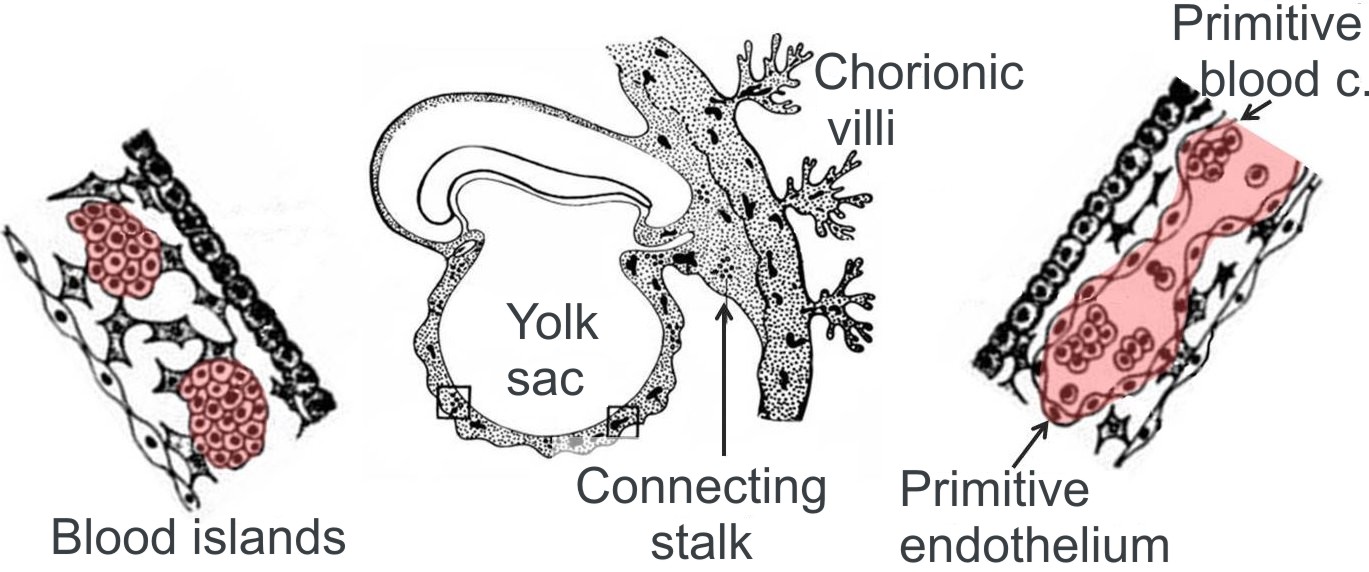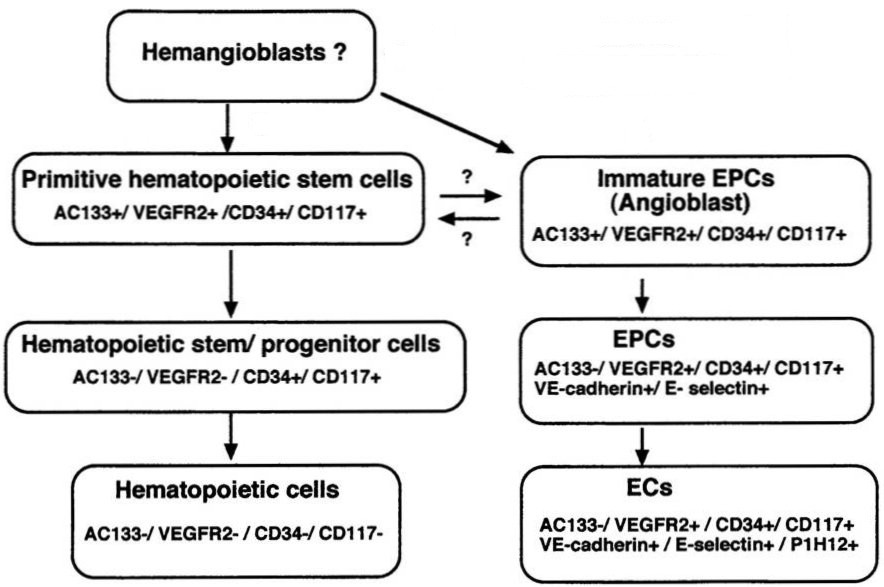ENDOTHELIAL PROGENITOR CELLS
Description of endothelial cells, their development and their progenitor cells incl. methods of isolation and usage in stem cell therapy.
2. ENDOTHELIAL CELL ORIGIN
During embryonic development, endothelial cells develop from the mesoderm where they form blood islands (Fig. 2). A hypothetic cell, which gives rise to the island, is called haemangioblast. This stem cell produces angioblasts, precursors of endothelial cells (that differentiate into endothelial progenitor cells) as well as haemopoetic stem cells responsible for haemopoiesis. The study performed by Zovein et al. (2008) indicates that a definitive haemopoiesis arises from endothelial cells of blood islands - VE-cadherin+ endothelial cells migrate in the foetal liver and later in the bone marrow where they initiate haemopoiesis. Another developmental source of endothelial cells can be represented by neuroectodermal cells from the neural crest (i.e. neural crest stem cells), which participate in formation of cardiovascular structures like semilunar valves, heart output/outflow, wall of the aorta and arteries of the aortic arches, vascular smooth muscle cells and pericytes. Pericytes of the blood vessels function as endothelial cell precursors.
 |
 |
|
| Fig. 2 A. Scheme of blood island origin. Haemopoiesis begins in blood islands - haemangioblasts (image on left) give rise to islands lined by the endothelium and containing blood cells (image on right). First blood islands appear in extraembryonc mesoderm of yolk sac, connecting stalk and chorion.
Modified from Klika et al. Embryologie 1986. |
FIg. 2 B. Semithin section of blood island in the embryonic body formed by spontaneous differentiaation of ES cells. Endothelial cells (arrows) line the edge of the island while blood cells accumulate in the lumen.
Author of the microphotograph: Jaroslav Mokrý. |
Furthermore endothelial cells can also arise from other stem cells. Mesenchymal stem cells incl. bone marrow stromal stem cells participate in postnatal neovascularization. In an experiment, vascular progenitors can be derived from ES cells (Yamashita et al., 2000); similar cells have not been isolated from any other tissue so far. Endothelial cells have been also isolated from tissue-specific stem cells like dental pulp stem cells, cardiac stem cells or neural stem cells.
Ability to generate endothelial-like cells was demonstrated also in other cell types and documented, e.g. in dendritic cells, CD14+ monocytes or mast cells. Similarly to blood endothelial cells that arise from progenitor cells (endothelial progenitor cells), lymphatic endothelial cells also arise from their specific progenitor.
 |
||
| Fig. 3. Scheme of development of endothelial cells. Haemopoetic stem cells and endothelial progenitor cells (EPCs) arise from the haemangioblast. In mice both cell types can substitute each other. With subsequent differentiation cells express distinct markers. ECs, endothelila cells. Modified from Masuda and Asahara, Cardiovasc. Res. 2003, 58, 390-398. |
